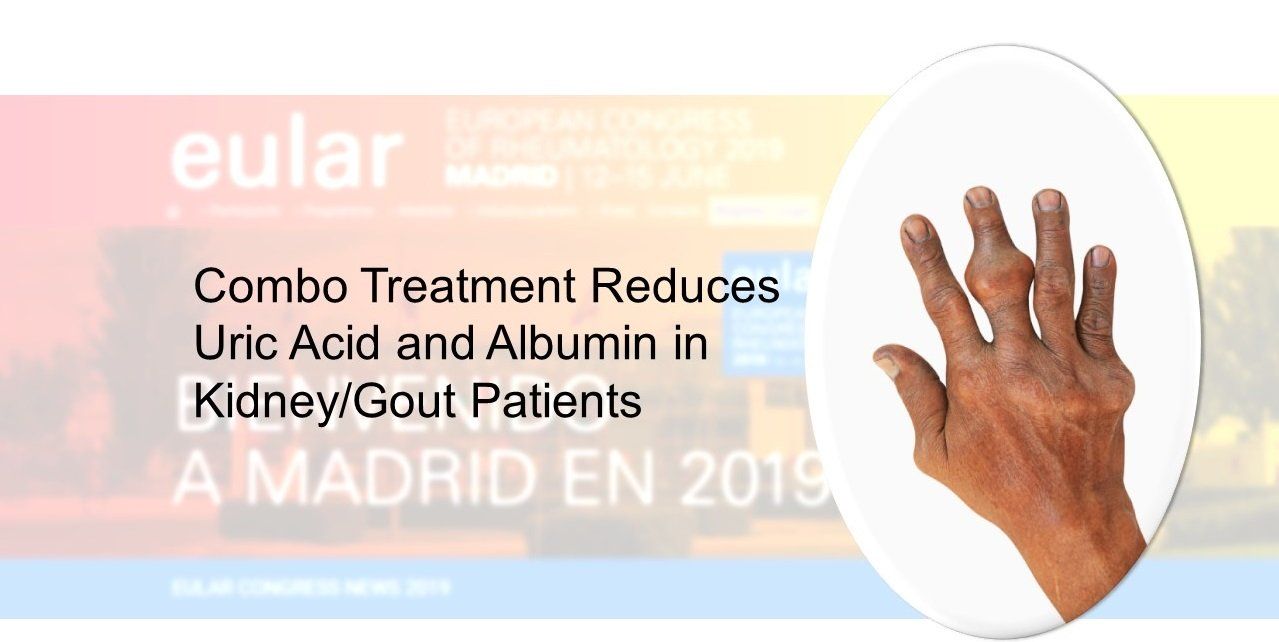Article
Combo Treatment Reduces Uric Acid and Albumin in Kidney/Gout Patients
An intensive treatment strategy that combines ebuxostat (Uloric, Takeda) and the novel verinurad, significantly reduced hyperuricemia and albuminuria in patients with type 2 diabetes patients.
An intensive treatment strategy that combines ebuxostat (Uloric, Takeda) and the novel verinurad, significantly reduced hyperuricemia and albuminuria in patients with type 2 diabetes patients. ©seneesriyotaShutterstock.com)

An intensive treatment strategy the combines ebuxostat (Uloric, Takeda) and verinurad, a urate transport inhibitor of URAT1 that is currently under study, significantly reduced hyperuricemia and albuminuria in patients with type 2 diabetes patients, shows a study presented at the European Congress of Rheumatology (EULAR) annual meeting taking place this weekend in Madrid.
“The effect was rapid and the improvement was sustained through week 24, suggesting that an intensive urate-lowering strategy that combines a URAT1 inhibitor (verinurad) with a xanthine oxidoreductase inhibitor, may protect against the progression of diabetic kidney disease. Further studies are planned to confirm the efficacy of a verinurad-led urate-lowering strategy in preventing chronic kidney disease,” wrote the authors who were led by Robert Terkeltaub, M.D., University of California San Diego.
Gout and kidney disease are closely related because uric acid is filtered through the kidneys. It is estimated that one in 10 people with chronic kidney disease have gout, and even more people with gout have kidney disease, according to American Kidney Fund. Hyperuricemia is a major risk factor for chronic kidney disease (CKD). And, because emerging data suggests that lowering serum uric acid may protect the kidneys by reducing albuminuria, Dr. Terkeltaub and his research team conducted a small trial to test this theory.
This was a phase two parallel randomized double-blind placebo-controlled trial of 60 patients with type two diabetes with microalbuminuria. 32 patients were assigned to the combo treatment group (verinurad 9 mg and febuxostat 80 mg) and 28 were assigned to placebo. In order to be enrolled in the trial, patients had to have type two diabetes, an serum uric acid levels of at least 6.0 mg/dL, a estimated glomerular filtration rate (eGFR) of at least 30 mL/min/1.73 m 2, and a urinary albumin-to-creatinine ratio (UACR) rate of 30–3500 mg/g.
The primary endpoint of UACR by 30 percent after 12 weeks was met. The secondary endpoints were also met: lower levels of serum uric acid, improvements in renal function biomarkers, and estimated glomerular filtration rate.
The mean change in eGFR was -1.73 percent for the treatment group, compared .55 percent of the placebo group. The mean change in sUA was -57 percent in the treatment group compared to 7 percent in the placebo group at 12 weeks and sustained through 24 weeks. Adverse events ranged from mild to moderate.
“Although these are early clinical findings in a limited group of patients, our results show that combined treatment with verinurad and febuxostat in patients with diabetes results in a rapid reduction in hyperuricemia and albuminuria sustained through week 24,” Dr. Terkeltaub told Rheumatology Network in an interview.
“Further studies are planned to confirm the efficacy of urate lowering strategies combining verinurad and xanthine oxidase inhibitors in slowing progression of chronic kidney disease,” he said.
Dr. Terkeltaub is a consultant for AstraZeneca, Horizon, SOBI, and Selecta.
REFERENCE
Terkeltaub R, Dronamraju N, Johansson SA, et al. “Urate-Lowering Therapy With Verinurad And Febuxostat Reduces Serum Uric Acid And Albuminuria In Hyperuricemic Patients With Diabetes.” EULAR 2019; Madrid: Abstract OP0207.




